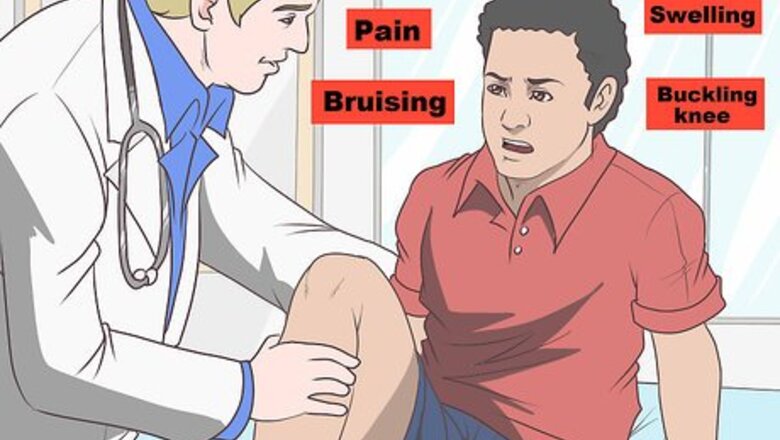
views
Getting Medical Treatment
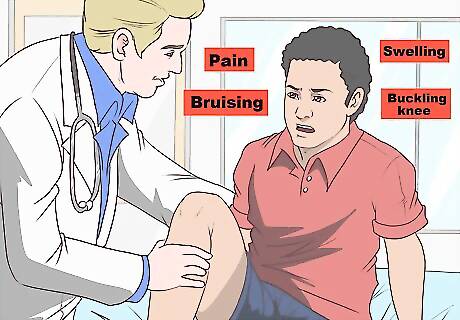
Visit a doctor to examine the injury. Tell your doctor or healthcare provider about any symptoms you have, including pain, bruising, swelling, or buckling of the knee. The doctor may test your knee’s range of motion by moving your leg back and forth. They may also take X-rays or an MRI of your knee. Explain to your doctor what caused the injury as well as how long the pain has lasted. Knee hyperextension can cause injuries and tears to the anterior cruciate ligament (ACL) and posterior cruciate ligament (PCL). Severe ligament injuries may need surgery.

Take an anti-inflammatory pain medication. In most cases, your doctor will recommend a non-steroidal anti-inflammatory drug (NSAID), such as ibuprofen (such as Motrin or Advil) or naproxen (Aleve) to relieve the pain. These are available over the counter. In more severe cases, the doctor may prescribe you pain medication. Take the medication according to your doctor’s instructions.

Undergo knee surgery if you have a ligament tear. If you have a torn ACL or PCL, your doctor may recommend surgery to restore your torn ligament. This surgery will repair the ligament by grafting a sample of tissue from yourself or a donor into your injured knee. It can take between 2-9 months to recover from ACL or PCL surgery. At the beginning, you may need to walk on crutches.
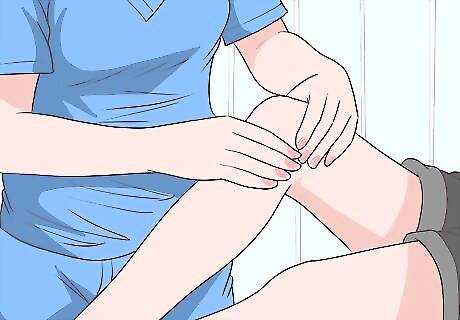
Get a referral to a physical therapist if necessary. Once the pain has reduced and you are able to move more easily, your doctor may give you a referral to a physical therapist to begin a rehabilitation program. This program will help you regain flexibility and extension in your knee without injuring yourself further. For minor hyperextension issues, you may not need physical therapy. Your doctor may just recommend low-impact exercises for a few weeks.
Treating the Knee at Home

Limit sports and other intensive physical activities. Don’t avoid moving entirely. Walking and doing normal chores can help your knee heal. That said, take a break from the activity that may have caused your injury, including any other vigorous activities, such as dancing, running, yoga, or contact sports. Your doctor will tell you when it is okay to resume these activities again. Minor injuries may heal within 2-4 weeks while more serious injuries may take between 4-12 months.
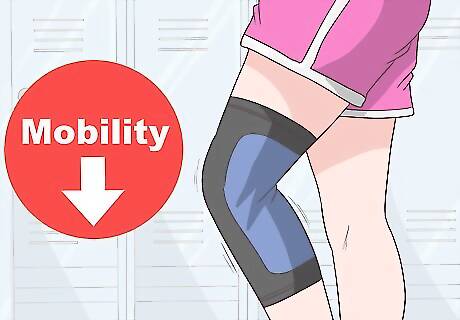
Wear a compression knee brace to help limit mobility. Some movement is good, but you may need to wear a brace during the acute-healing phase to get through regular daytime activities. This should keep you from moving too much or putting too much weight on your knee. You can buy a knee brace from a medical supply store, drug store, or some sports stores. Keep your brace on constantly throughout the day. A neoprene brace will both protect your knee and provide gentle compression, which can help reduce pain and swelling while your knee heals.

Elevate your knee while you rest. Lie down on the couch or bed with your leg raised on a pile of pillows or books. This will reduce swelling and help your knee heal. While you sleep, keep the leg propped up on a pillow.
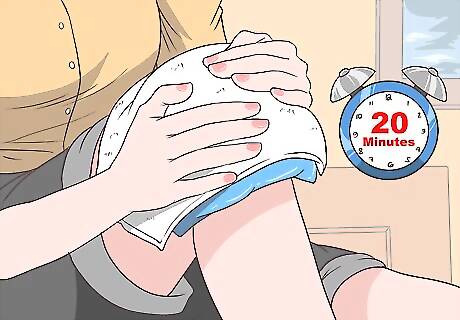
Ice the injury for 20 minutes to reduce pain. Take an ice pack from the freezer or fill a plastic bag with ice. Wrap the pack in a towel or cloth and apply the pack to your knee. Keep it there for 20 minutes while you rest and elevate your leg. Once you remove the ice, wait 20 minutes before putting it on again. Repeat as necessary. It’s especially important to ice recent injuries.
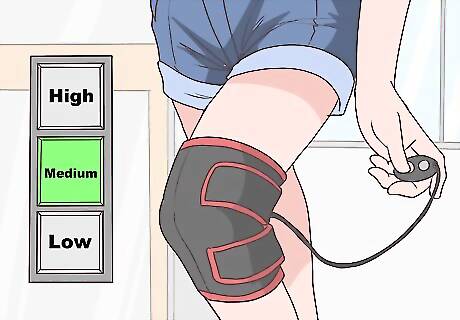
Apply heat to your knee to improve flexibility. Take a heating pad and put it on a medium setting. Alternatively, you can microwave a damp cloth for 20 seconds. It should be warm but not very hot. Place the heat on your knee for 20 minutes at a time while elevating your knee.
Strengthening Muscles around Your Knee
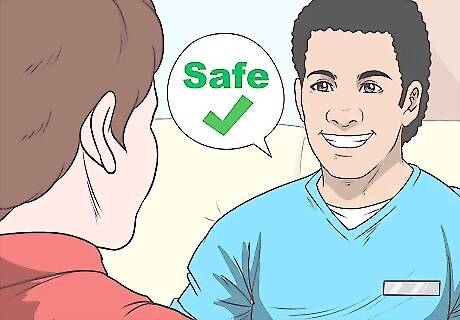
Talk to your physical therapist or doctor before exercising. Before starting any new exercises, make sure that it is safe by talking to your physical therapist or doctor. They may have suggestions for exercises that you should do. Go slowly at first. Even if you were active before the injury, straining your knee too early may worsen your hyperextension. You should not feel pain during or after exercise. If you do, stop what you are doing and rest your knee. Your physical therapist may advise you to do your exercises up to 3 times a day.
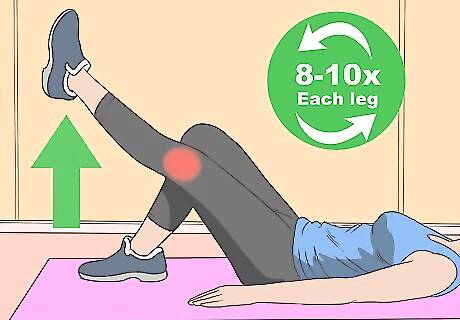
Do straight leg lifts. Lie on your back on the floor. Bend your strong knee and straighten out your injured leg. Raise the straight leg a few inches off the ground. Hold this pose for 3-5 seconds. Slowly lower your leg to the ground. Switch legs. Repeat 8-10 times on each leg.

Hold onto a chair for hamstring curls. Grasp the back of a chair with both hands. Support your weight on your strong leg. Bring the heel of your weak knee up until it touches your buttocks. Hold for 3-5 seconds before lowering the leg. Switch and repeat on your other leg. Repeat 8-10 times on each leg.
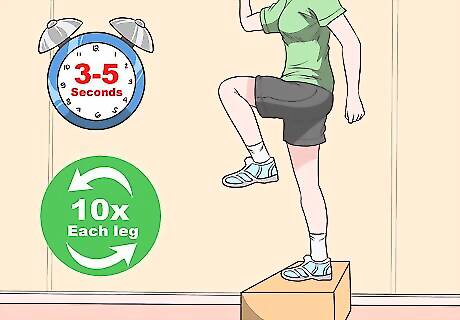
Step up to a platform. Stand beside a 6-inch (15 cm) platform. Step up onto the platform with 1 leg. Bring the other leg up so that it is hovering off the platform. Hold the pose for 3-5 seconds before stepping down. Switch legs and repeat up to 10 times on each leg.
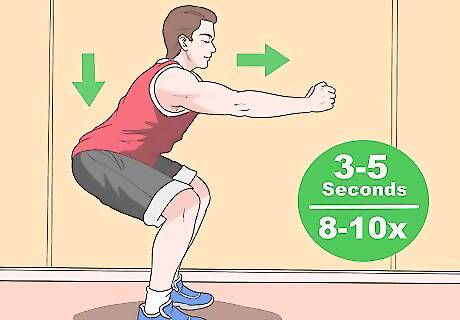
Go down into a half-squat. Stretch out your arms straight in front of your or hold onto the back of a chair. With your feet hips-width apart, lower your hips as though you are about to sit in a chair. Only lower yourself a few inches. Hold the pose for 3-5 seconds before slowly rising. Repeat 8-10 times.
Improving Your Mobility
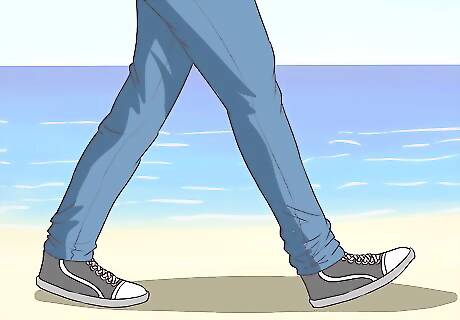
Take short walks throughout the day. A long walk may be too much activity at first. Instead, take as many short walks as you can during the day. Walk around the block in the morning or evening. During lunch, stroll around the building. Take breaks throughout the day to walk to the restroom or to get a drink of water. If you are on crutches, talk to your doctor about the best way to stay active during your recovery period. Walking on a treadmill or elliptical can also help improve your strength while recuperating from a hyperextended knee.
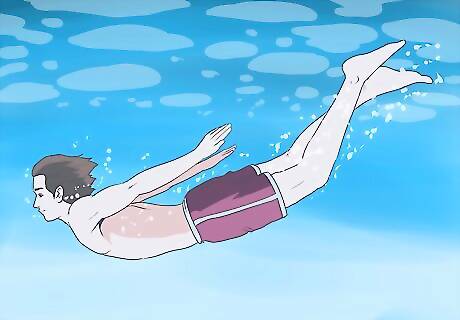
Exercise in the pool. Swimming is a gentle activity that is easy on your knee joints. Do laps around a pool. If swimming is too much for you, you can also try water walking by simply walking around the pool. The water will relieve the pressure on your joints.
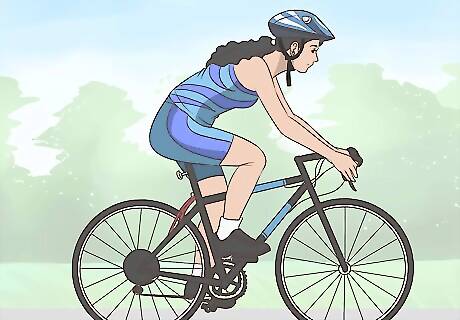
Ride a bike. Cycling is a great low-impact activity that can keep your knees mobile while you heal. You can ride a normal bike or use a stationary bike. Start slowly by cycling for 5-10 minutes. Work your way up until you can do 20-30 minutes at a time.

















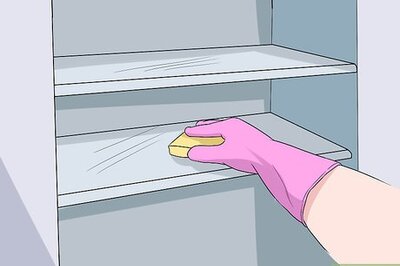
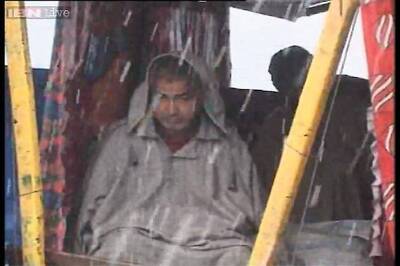

Comments
0 comment